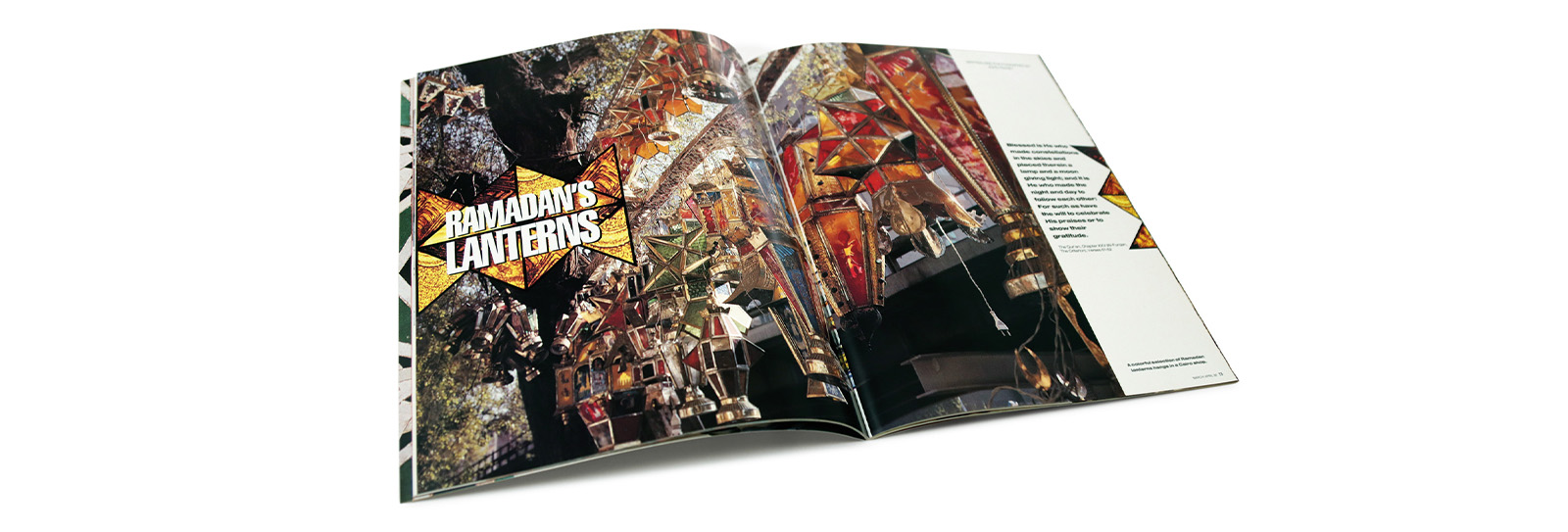
In the March/April 1992 issue, writer and photographer John Feeney took AramcoWorld readers on a walk through the streets of Cairo during Ramadan. There, they were illuminated with the cover story and tradition of “Ramadan’s Lanterns.” Feeney, a longtime contributor with close to 100 credit lines in AramcoWorld, spent more than 30 years in Egypt, sharing stories and educating readers across the globe.
Ramadan, the ninth month of the Hijri lunar calendar, marks a time for fasting, blessings and prayers. Muslims give thanks to God during this holy month, and within Arab countries, one can find lanterns and other decorations adorning homes throughout. Merchants in larger cities even get in on the festivities, bedecking storefronts with these Ramadan lanterns, or fawanees as they’re called in Arabic.
“One week before Ramadan begins,” writes Feeney in his 1992 story, “part of Ahmad Maher Street, for most of the year a humble thoroughfare in the old medieval quarter of Cairo, is transformed. Usually home to tinsmiths, marble-cutters and makers of mousetraps, for one glorious month it becomes ’The Street of the Lanterns.’”
Discover more about this story and more from our FirstLook section.
You may also be interested in...

Hijrah: A Journey That Changed the World
History
Arts
Avoiding main roads due to threats to his life, in 622 CE the Prophet Muhammad and his followers escaped north from Makkah to Madinah by riding through the rugged western Arabian Peninsula along path whose precise contours have been traced only recently. Known as the Hijrah, or migration, their eight-day journey became the beginning of the Islamic calendar, and this spring, the exhibition "Hijrah: In the Footsteps of the Prophet," at Ithra in Dhahran, Saudi Arabia, explored the journey itself and its memories-as-story to expand understandings of what the Hijrah has meant both for Muslims and the rest of a the world. "This is a story that addresses universal human themes," says co-curator Idries Trevathan.
FirstLook: Duet
Arts
“Duet” comes from the Latin root word duo which means two. The Duet series focuses on double portraits, a tradition in West Africa.
FirstLook: "In the Marshes of Iraq"
Arts
History
“In the Marshes of Iraq” — November/December 1966